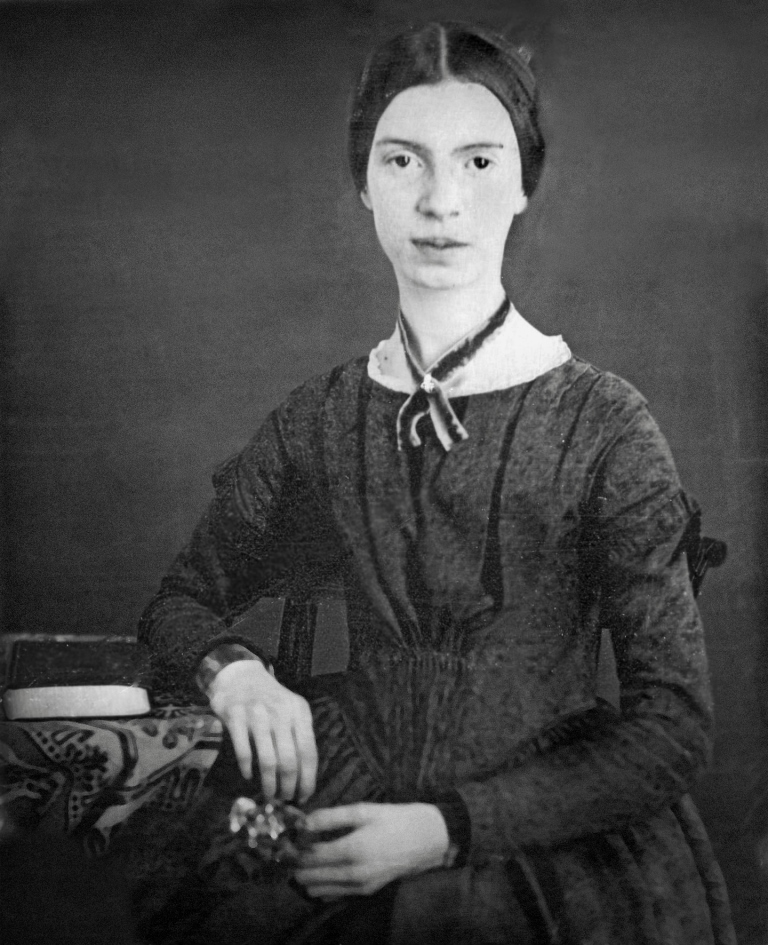Poet Emily Dickinson was born in 1930 in Amherst, Massachusetts. Although she was not famous during her lifetime—only seven of her almost 1800 poems were published while she lived, all heavily edited—she became known after her death as one of the most influential American poets.
Dickinson grew up in a large Amherst home called the Homestead. The family was well-known and influential in the area; Dickinson’s grandfather founded Amherst College and her father was a state legislator. Dickinson had an older brother and a younger sister, and all three siblings lived their whole lives at or near the Homestead.
Dickinson was very social and active as a child. She excelled at school and went on to complete one year at Mount Holyoke Female Seminary. She never returned to the seminary after the first year, however; scholars don’t know exactly why, but many point to her poor physical or emotional health. Indeed, Dickinson continued to have health problems throughout her life and became increasingly secluded in her family home, dedicating most of her time to writing, gardening, and caring for her elderly mother.
Despite her poor health, Dickinson kept lively correspondence with many friends and several writers, including literary critic T.W. Higginson, editor Samuel Bowles, and Reverend Charles Wadsworth.
Although she sent out her poetry for publication, its experimental syntax and off-rhymes were rejected by most publishers. Those who did publish her work edited it heavily to reflect literary standards of the time. However, she continued to write prolifically and meticulously stored her poems in a box.
Dickinson’s sister Lavinia discovered the work after her death in 1886 and published many of them in a book in 1890. Dickinson’s complete works were not published in a single collection, however, until 1955. Her work is considered highly influential in shaping the direction of twentieth-century poetry.
Sadly, this is the final Women’s History Month post. We’ve barely scratched the surface of the influence women, authors and educators, have had on the literary and academic community, on the human experience. However, we won’t have much time to be sad, because April is National Poetry Month! Get ready to enjoy some amazing poems and poets with us here on the blog. To give you a glimmer of what that will be like, here’s one of our favorite Emily Dickinson poems:
“Hope” is the thing with feathers –
That perches in the soul –
And sings the tune without the words –
And never stops – at all –
And sweetest – in the Gale – is heard –
And sore must be the storm –
That could abash the little Bird
That kept so many warm –
I’ve heard it in the chillest land –
And on the strangest Sea –
Yet – never – in Extremity,
It asked a crumb – of me.

